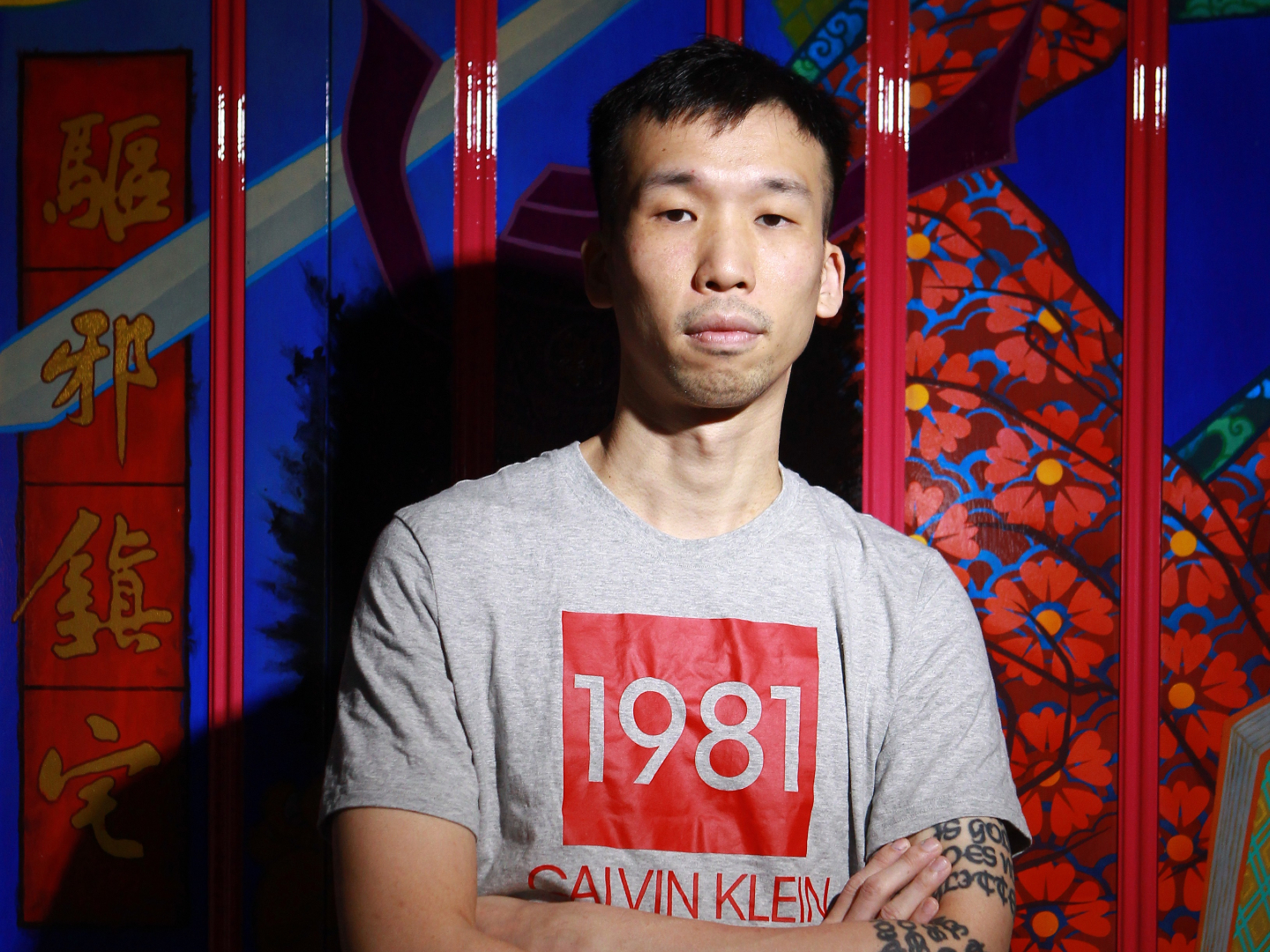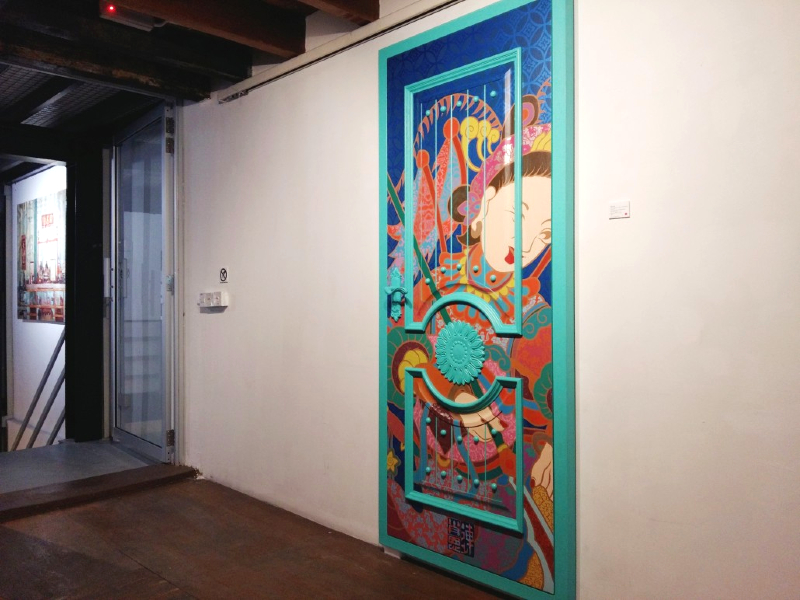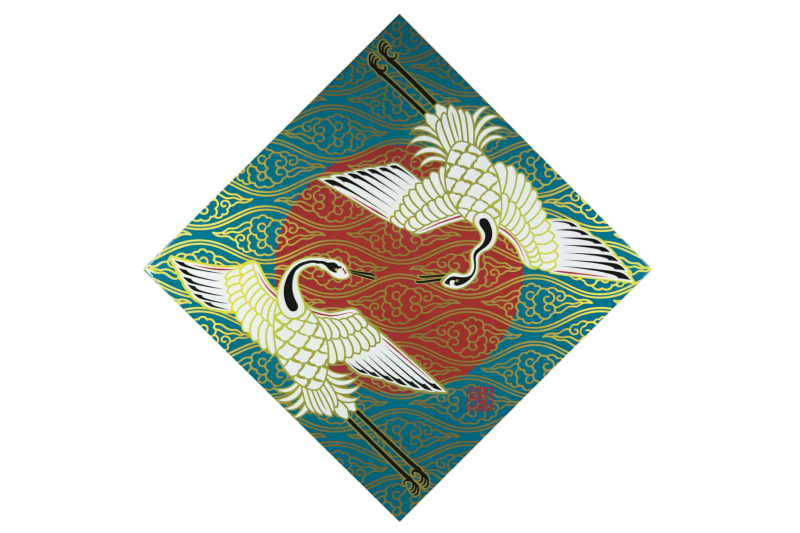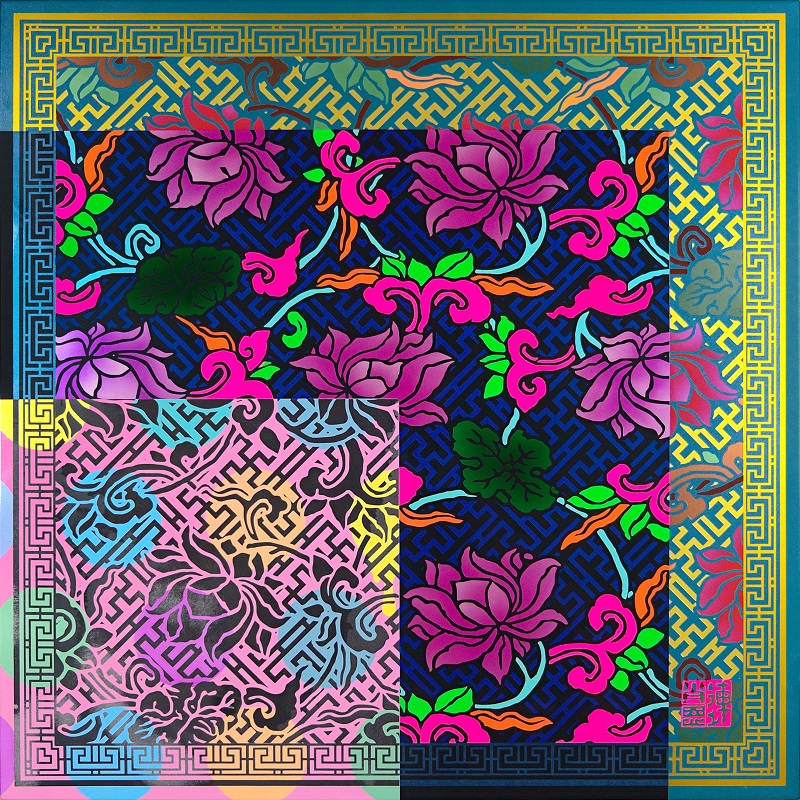
Lean: Playing around with these images is just fun and an extension of me (Photo: Patrick Goh/The Edge)
What is immediately apparent about emerging Malaysian artist Sean Lean’s latest series of works, M2, is how colourful they are. A painted door, with its teal trimmings, would be the first thing to catch your eye as you reach the landing of the newly reopened Wei-Ling Gallery in Brickfields. The image on it, an opera singer depicting a Chinese deity, is described as “a half-fictional character on a half-fictional door”.
The idea of fiction is an indirect theme throughout the 14 new works presented, which blur the lines of traditional Chinese iconography. The questioning of cultural identity is something Lean first explored in his second solo exhibition, Motherland, in 2015, where he confronted the “Chineseness” of his upbringing and, with it, his wrestling with what it means to be Chinese.
wei_ling_m2.jpg

He recounts, “It was motivated by my relationship with my father in a way. My dad is very traditional. As a kid, my bedtime stories were Romance of the Three Kingdoms, that kind of Chinese literature. I was also Chinese-educated in primary and secondary schools. But as a teenager, I became quite rebellious, and that extended into shunning my own Chinese roots and turning towards American pop culture.”
The Klang native shares that while his interest in Western comic books and literature grew, along with a budding love for American sitcoms — interests not shared by his peers — it was a rather isolating experience, one that created a chasm with his more traditional cultural nurturing.
In Motherland, the artist explored this identity divide in a rather literal manner of East and West juxtaposition — oriental imagery with a Western approach, featuring a more graphic and “mechanised” style antithetical to the nuance of traditional Chinese art.
The bold and clear-cut tone remains in M2. Nevertheless, the new works reveal an artist more well versed and at ease with the imagery used, with a touch of sophistication in ideation that shows obvious maturity and depth.
sean_lean_-_cranes_sunrise_traditional_2019_automotive_paint_on_steel_158.5cm_x_158.5cm.jpg

Lean says of continuing the series, “Usually, every body of work I do is very different. Even in my last show, it was so — maybe because I get bored very easily. But with this idea, I don’t know, it just calls for me. I get excited because there is this wealth of imagery in Chinese history and, looking back, I felt I wasn’t done. I still don’t feel that I am done.”
This time, he also moved on from direct East-West comparisons to ask the broader questions of culture and tradition itself: how they grow, evolve and perpetuate and, ultimately, how one contributes to it.
He does this with a sense of subversive playfulness in his choice of colours, technique and materials. Instead of the typical canvas, Lean uses steel, metal and doors. The works are also mostly stencilled. He says, “I like the contrast, that the subject matter doesn’t really fit the material, or the technique as well. Culture is supposed to be very organic, a lively thing, but I like that here it is presented in a sort of placid quality.”
He points out that the mechanical process was his way of “ripping the soul” out of the subject matter, like an act of pretension. Even in his choice of imagery, from dragons to the lotus flower, the Buddhist Swastika and traditional Chinese ink vase paintings, there is a touch of cliché and irony.
sean_lean_-_dragon_samples._round_2019_automotive_paint_on_steel_135cm_x_135cm.jpg

“I used images from books, the internet… There is no formula. Sometimes, I flipped through books, and certain images intrigued me. So, I worked with that,” shares Lean, adding that how people may perceive the works depends on how well versed they are with Chinese culture.
“For traditionalists, the way I use these patterns can be almost blasphemous, like ‘What are you trying to do?’ But, on the other hand, someone with little knowledge of Oriental symbolisms may look at the works and think, ‘Oh, it’s very Chinese.’”
The artist also created his works in series of threes, though not as triptychs. Anchored by the same key motifs, one piece has a purer, more traditional flair, while another is markedly manipulated, and yet another is a hybrid of both, but with an added element. The discordance reflects his own internal struggles. “I was trying to be as disorientating as possible. I mean, that’s how I feel culturally, like awkward,” he says.
The overlaying of elements seems very much a representation of today’s global culture — blended and mixed, at times familiar, yet jarring. But Lean refuses to go that far in attributing definite meaning to the works. If one expects to look at the pieces in M2 and find deeper answers into the artist’s state of mind, it could be an exercise in futility.
sean_lean_-_lotus_flowers_on_swastikas_samples_2019_automotive_paint_on_steel_112cm_x_112cm.jpg

“I know, coming from the person who made the pieces, it’s a funny thing to say. But I don’t have an interest in controlling how one sees the work. It’s not that there isn’t an answer, but maybe I’ve not been able to find that clarity yet in rationalising what I did and why. Maybe it’s because I am more comfortable now with who I am; so, playing around with these images is just fun and an extension of me. I don’t overthink it. And often, it’s not about answers anyway, I feel. It’s so second nature to me now [these feelings and thoughts]. It’s like asking me why I make art. It just is.”
That said, he qualifies that there is significance to each piece, and an intentional process in creating them. He points at the second door piece, a magenta one depicting a Ming Dynasty mythical deity named Zhong Kui. It is sketched based on loose references rather than a found image. Lean says popular portrayals of the character often feature him in Ming clothing, even though Zhong Kui predates the dynasty.
“So, then, the question is, how true is this a reflection of history, tradition and cultural roots? At what point does one determine what the original is, anyway? I feel this ambiguity gives me licence to have my own say, maybe, to express my own thoughts and ideas about my culture, which I feel is always in flux, anyway. And, maybe, by playing with these images, I’m extending and contributing towards it — rather than defiling or desecrating something sacred.”
'M2', Wei-Ling Gallery, 8 Jalan Scott, Brickfields, KL. Until Feb 29. Free admission. For more info, see here.
This article first appeared on Feb 3, 2020 in The Edge Malaysia.


